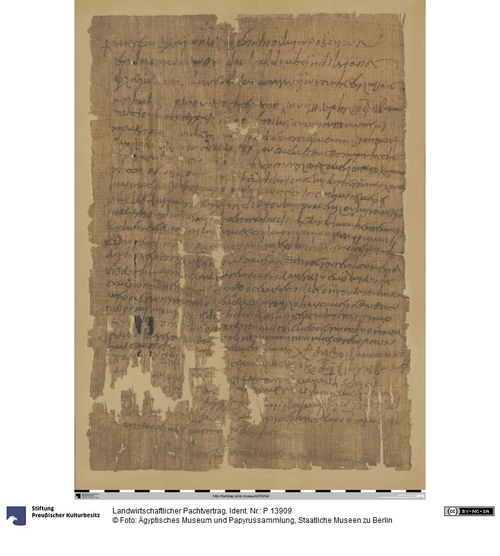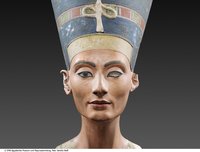Aurelios Phoibammon, Sohn des Paesis und der Troile aus dem Epoikion Syntapuo pachtet von Flavios Johannes (II), Sohn des Taurinos, für 4 Jahre die Hälfte eines Johannes gehördenen Trockenlandes zusammen mit der Hälfte einer Zisterne und den Rechten an einem großen und einem kleinen Schöpfrad mit Wasserkammern (τύμπανον). Als Pachtzins erhält Johannes in jedem Jahr, in welchem das Land bebaut werden konnte, die Hälfte der Ernte. Die Miete für die Schöpfräder muss er in jedem Fall bezahlen. Unterschriften des Schreibhelfers Aurelios Viktor, dreier Zeugen (N.N., Theon, Serenos) und des Notars Hermogenes (?).
Nach BerlPap: http://berlpap.smb.museum/03934/
en

